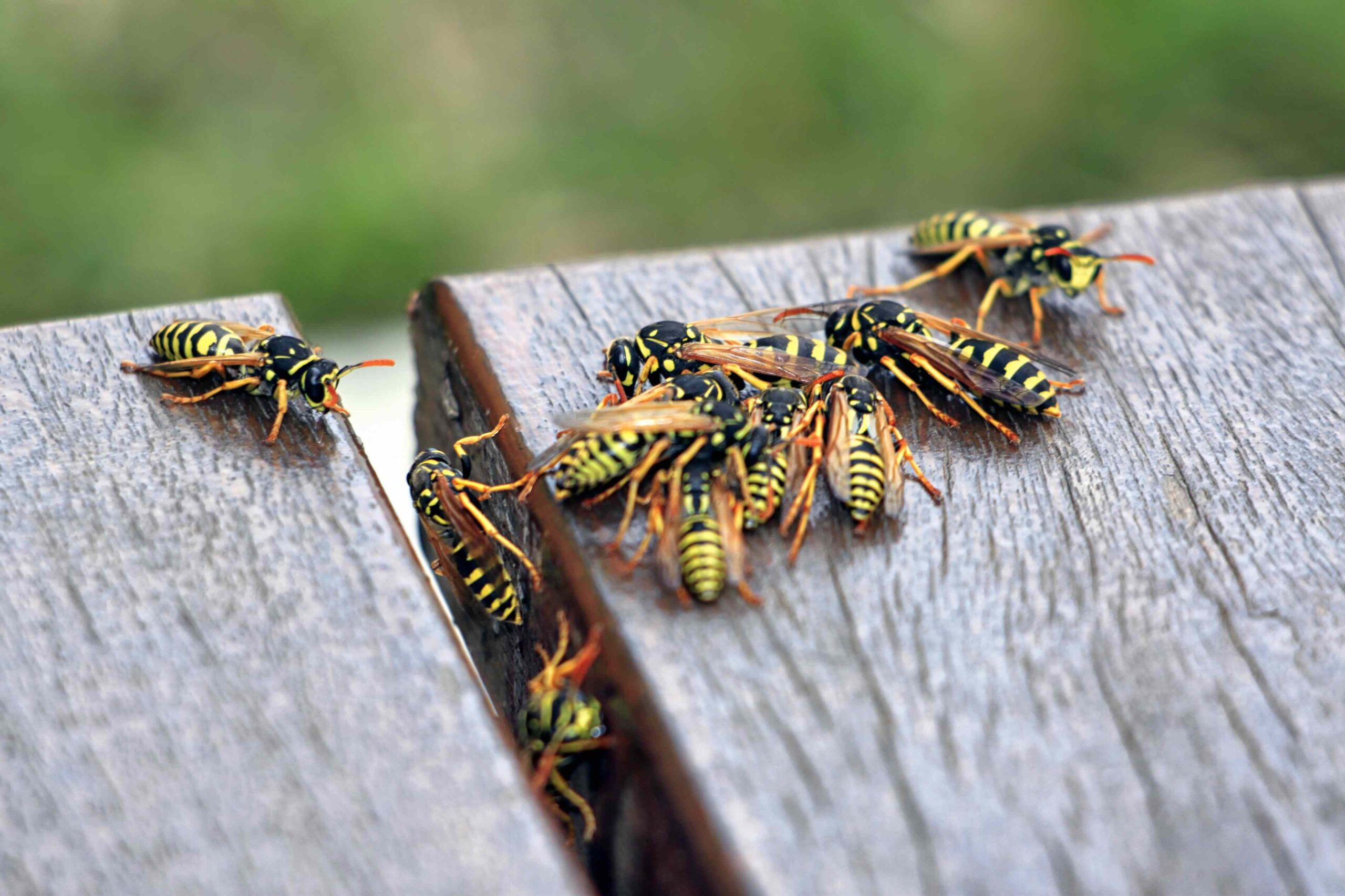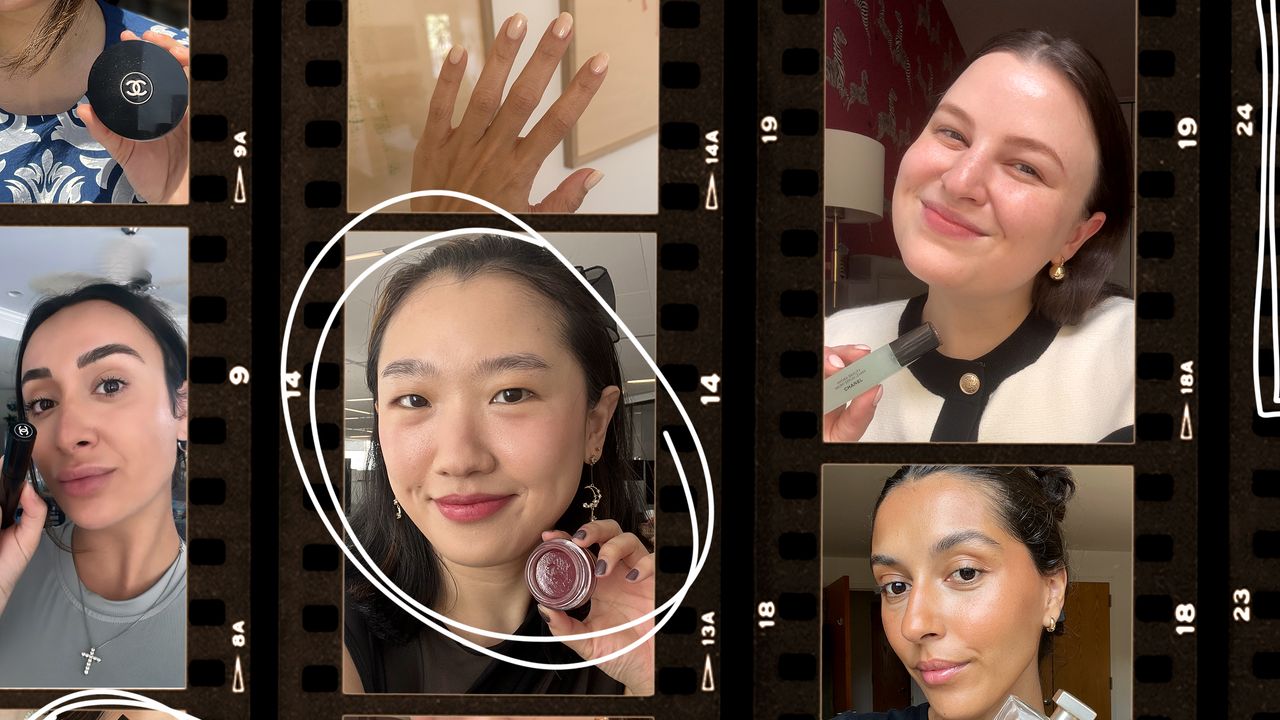Key Points
- Wasps are drawn to your yard by any food and drink containing sugar or protein.
- They like to build their nests in sheltered spaces, often close to the house.
- Get rid of wasps by eliminating what attracts them and safely destroying their nests.
It only takes a few wasps to crash an outdoor summer gathering. Wasps are more aggressive than bees, especially when they feel threatened, and their sting is painful and worse than a bee’s. Despite wasps’ important role as pollinators and predators of insect pests, these are not insects you want to have hanging around your home.
To make your yard a no-fly zone for wasps, it’s important to understand what attracts them and where they like to build their nests.
What Attracts Wasps
Andi Edwards/Getty Images
Protein
In spring and early summer, wasps are heavily drawn to anything high in protein, from other insects to the hamburgers on your barbecue or deli meat on a sandwich. You’ll also find the buzzing around open garbage containers in search of protein-rich food.
Want more gardening tips? Sign up for our free gardening newsletter for our best growing tips, troubleshooting hacks, and more!
Carbohydrates
Wasps forage for anything sweet: nectars of flowering plants, fruits, and any foods and beverages humans put within their reach. In late summer, wasps increasingly search for sugary foods.
Fruit trees close to harvest, and especially overripe, fallen fruit are a big wasp magnet.
Bright Colors
The flowers that wasps visit for nectar are typically yellow and white and therefore any object, including clothing in those colors, is appealing to them.
Sweet Scents
Any sweet scents—whether natural from flowers or manmade scented soaps and perfumes—attract wasps. Wasps have a highly developed sense of smell and associate sweet fragrances, just like bright colors, with food sources.
Sheltered Spaces
Wasps may start a nest in any sheltered spaces where there is light, warmth, cover from the elements, and protection from predators like other insects, birds, amphibians, reptiles, and mammals.
Open Water
Wasps seek out water not only for drinking, but they also use it for nest building and cooling their nests. That’s why you’ll see them hover over any water source, such as open pools, ponds, faucets, bird baths. They consume water on the spot or bring it back to the nest.
Untreated Wood
Wasps use the pulp of untreated wood to build their nests. They are attracted by dead wood like fallen trees, stacked firewood, and weathered decks where the wood surface is exposed so they can access the pulp.
Other Insects
If you have an infestations of insect pests in your yard, it will likely draw wasps. Both social wasps (paper wasps and yellowjackets) and solitary predatory wasps feed insects to their protein-hungry larvae in the nest.
Adult larvae do not feed on insects, they only consume sugary liquid food, which makes the honeydew produced by aphids an exception.
Common Areas to Find Wasps
Based on the food or shelter wasps are looking for, these are places where they commonly nest:
- Under eaves and roof overhangs.
- Trees and shrubs.
- Open compost bins and heaps.
- Outdoor furniture and swing sets.
- Utility boxes.
- Outdoor grills that have not been used for a while.
- Dead hollow trees.
- Abandoned rodent burrows, under rocks or logs, or in other underground cavities (for ground-nesting wasps).
How to Get Rid of Wasps
Stefan Rotter/Getty Images
Removing the wasp nest is the most effective way to get rid of wasps because it kills the entire colony.
For larger nests, use a commercial wasp spray that can be sprayed safely from a distance (as far away as 20 feet). For small nests that are just starting for form, you can make your own spray using dishwashing liquid and water. Whatever spray you use, ensure that you spray only at night when the wasps are inactive.
Wasp traps, either commercial or homemade traps, are a gentler way to get rid of wasps though it does not eradicate all of the colony, so you might have to keep the traps up during the entire season. The traps are placed where wasps like to congregate but away from wasp nests themselves and areas of human activity.
Keeping your yard clean makes it less attractive to wasps. Collect any fallen fruit or vegetables, such as peppers and tomatoes, keep compost in an enclosed bin, and control aphids before they turn into infestations.
When to Call a Pro
Wasp nests that are very large or in locations that are difficult to reach, such as under an eave, require a professional to remove safely. If you are allergic to bee stings, do not attempt to remove a nest of any size; outsource it to a professional.
FAQ
-
Popular wasp repellants include clove, geranium, and lavender essential oils, peppermint oil, and wasp-repellant plants such as spearmint and eucalyptus.
-
Muted colors such as khaki, tan, and dark colors don’t necessarily repel wasps but they are less attractive to wasps than bright colors.
-
Which bait works best depends on the wasp species in your yard. European paper wasps respond to fruit juice baits, whereas yellow jackets can be effectively baited with heptyl butyrate, a colorless liquid with a fruity, sweet odor that is naturally found in apples and plums and is available bottled for yellowjacket traps.




![BENTOBEN Magnetic for iPhone 14 Pro Case [Compatible with Magsafe] Translucent Matte 14 Pro Phone Case Slim Shockproof Women Men Girls Boys Protective Cover Cases for iPhone14 Pro 6.1″, Forest Green BENTOBEN Magnetic for iPhone 14 Pro Case [Compatible with Magsafe] Translucent Matte 14 Pro Phone Case Slim Shockproof Women Men Girls Boys Protective Cover Cases for iPhone14 Pro 6.1″, Forest Green](https://digihuntzz.com/wp-content/uploads/2025/07/71q1Ndgi8FL._AC_SL1500_.jpg)





